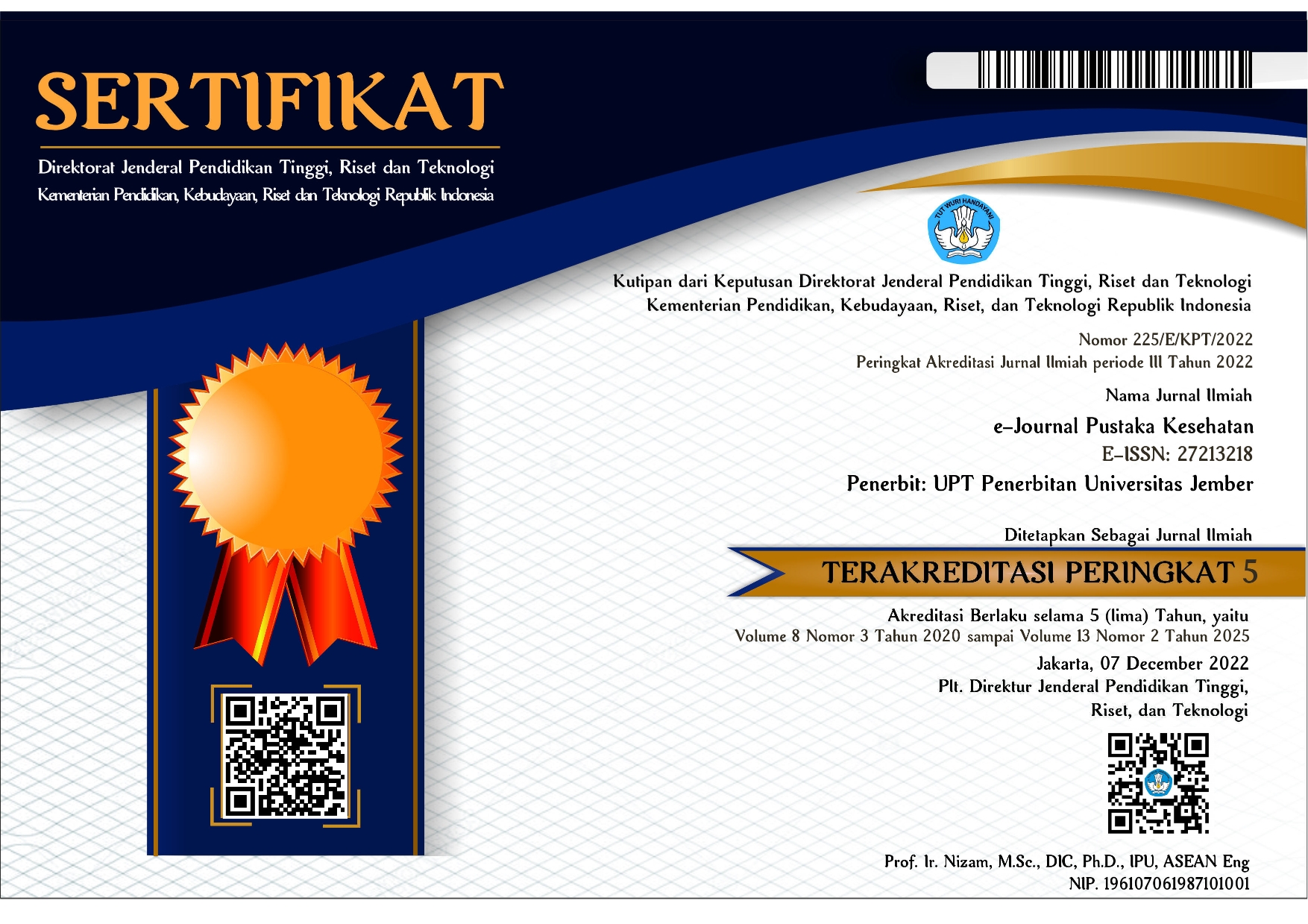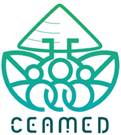Daya Antibakteri Kombinasi Kitosan Cangkang Udang Putih (Litopenaeus vannamei) dan Siprofloksasin terhadap Salmonella typhi (Antibacterial Activity of Combination of White Shrimp (Litopenaeus vannamei) Shells Chitosan and Ciprofloxacin against Salmonella
Abstract
yphoid fever is an acute infectious disease in the intestinal tract caused by Salmonella typhi. The prevalence of typhoid fever in Indonesia in 2013 was 81% per 100,000 population. Ciprofloxacin is a large-spectrum antibiotics, but in some countries ciprofloxacin has been known to be resistant to S. typhi. Therefore, other methods are needed to improve the effectiveness of ciprofloxacin by combining with chitosan. Chitosan is a polysaccharide which known to be effective in some positive and negative Gram bacteria and able to overcome the resistance of some antibiotics. The research objective was to determine the effect of antibacterial and Minimum Inhibitory Concentration (MIC) of the combination of Litopenaeus vannamei chitosan and ciprofloxacin against S. typhi. The method used to obtain the value of the MIC was microdilution method with quasy-experimental research design and posttest only control group design. MIC which already been obtained then used to find the Fractional Inhibitory Concentration Index (FICI) using a checkerboard test to interpret the effect of the combination. The MIC combination showed different results in each repetition that chitosan: 15.63 to 62.5 µg/mL and ciprofloxacin from 0.03 to 0.5 µg/mL and known to have a smaller value than the MIC single. While the value of FICI from 5 repetitions was 0.476. So, it could be concluded that the combination of chitosan and ciprofloxacin has an antibacterial effect on S. typhi and have a synergistic combination effect.
Keywords: Salmonella typhi, chitosan, ciprofloxacin, microdilution method, checkerboard test.
Downloads
Downloads
Published
Issue
Section
License
e-Journal Pustaka Kesehatan has CC-BY-SA or an equivalent license as the optimal license for the publication, distribution, use, and reuse of scholarly work. Authors who publish with this journal retain copyright and grant the journal right of first publication with the work simultaneously licensed under a Creative Commons Attribution-ShareAlike 4.0 International License that allows others to share the work with an acknowledgment of the work's authorship and initial publication in this journal.







